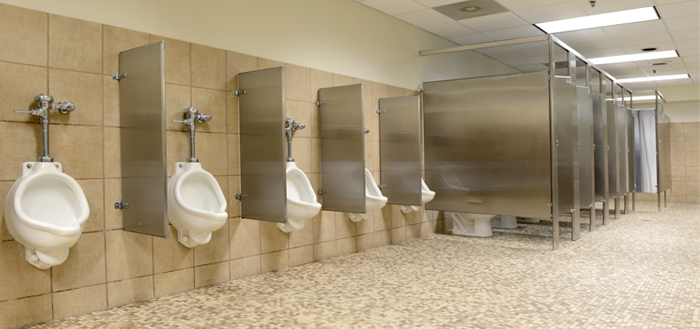
Originally published & reprinted with permission from CleanLink Online
By: Kassandra Kania
In order for enzyme-based cleaners to work correctly, custodial staffs need to be trained on the proper procedures for handling and using these products.
“Enzymes have a very short life cycle,” notes Cadell. “They are kept dormant in a suspension agent until they are diluted with water, at which point they need to find a food source quickly, or they will die.”
Once the enzymes are activated, they need to be applied directly to the surface that needs cleaning.
“These are not the type of products you can toss into your mop water,” warns Cadell. “They’ll start to attack things inside the mop, because the first place the enzyme touches and finds its food source is the first place it’s going to attach and eat.”

Cadell recommends spraying the enzymatic cleaner close to the area being targeted — within a foot or less for grout lines.
If custodians are using enzymatic-based cleaners on touch points, distributors encourage managers to train staff to target those areas first, and then move on to urinals, toilets, and finally, floors.
“We suggest workers clean the entire restroom with the bio-enzymatic cleaner, and then the last thing they do is mop the floors with it,” says Crisafulli. “Workers should start with dry processes — always working from high to low — and then work their way from the farthest point in the restroom to the door.”
Because disinfectants will attack enzymes, distributors advise custodians to disinfect before using enzymatic cleaners.
“Some managers train their people to go in and spray enzymes to take care of odors and then use disinfectant on top of that,” says Cadell. “In these cases, they’ve killed the product before it’s even had a chance to work.”
The last area to be cleaned with the enzymatic cleaner is the floor. In addition to training custodians on daily procedures, Crisafulli advises them to do a restorative-type cleaning on floors every three months using an enzymatic cleaner.

“If we have a lot of odor complaints, we’ll do an evaluation and find that it’s usually because of the floors,” he says. “We’ll encourage departments to do a deep cleaning or scrubbing with the enzymatic cleaner and then do a heavy wet mop with the enzymatic cleaner for three or four days in a row. That way we know the surface is going to stay wet for 24 to 36 hours, and the enzymatic cleaner will continue to break down the odor-causing bacteria.”
While the industry has been slow to adopt enzymatic cleaners, Flieler predicts that sales will pick up over the next year due to safer blends, wider availability and more general knowledge.
“It’s common sense,” he says. “Bio-enzymatic cleaners are safer to use, safer for the environment and safer for human health. They continue to clean well after the initial application, and you displace those potentially disease-causing bacteria. Once we introduce people to these products and explain what they are and how they work, they never go back.”
KASSANDRA KANIA is a freelance writer based in Charlotte, N.C.
Read More:
A Bioremedial Approach...What Are Microbes?
Eight Tips for Keeping Facilities Clean
FAQs About the Differences Between Disinfecting & Sanitizing
PDIR: R is for Restorative (Cleaning)
The Difficulty of Keeping Restrooms Clean

